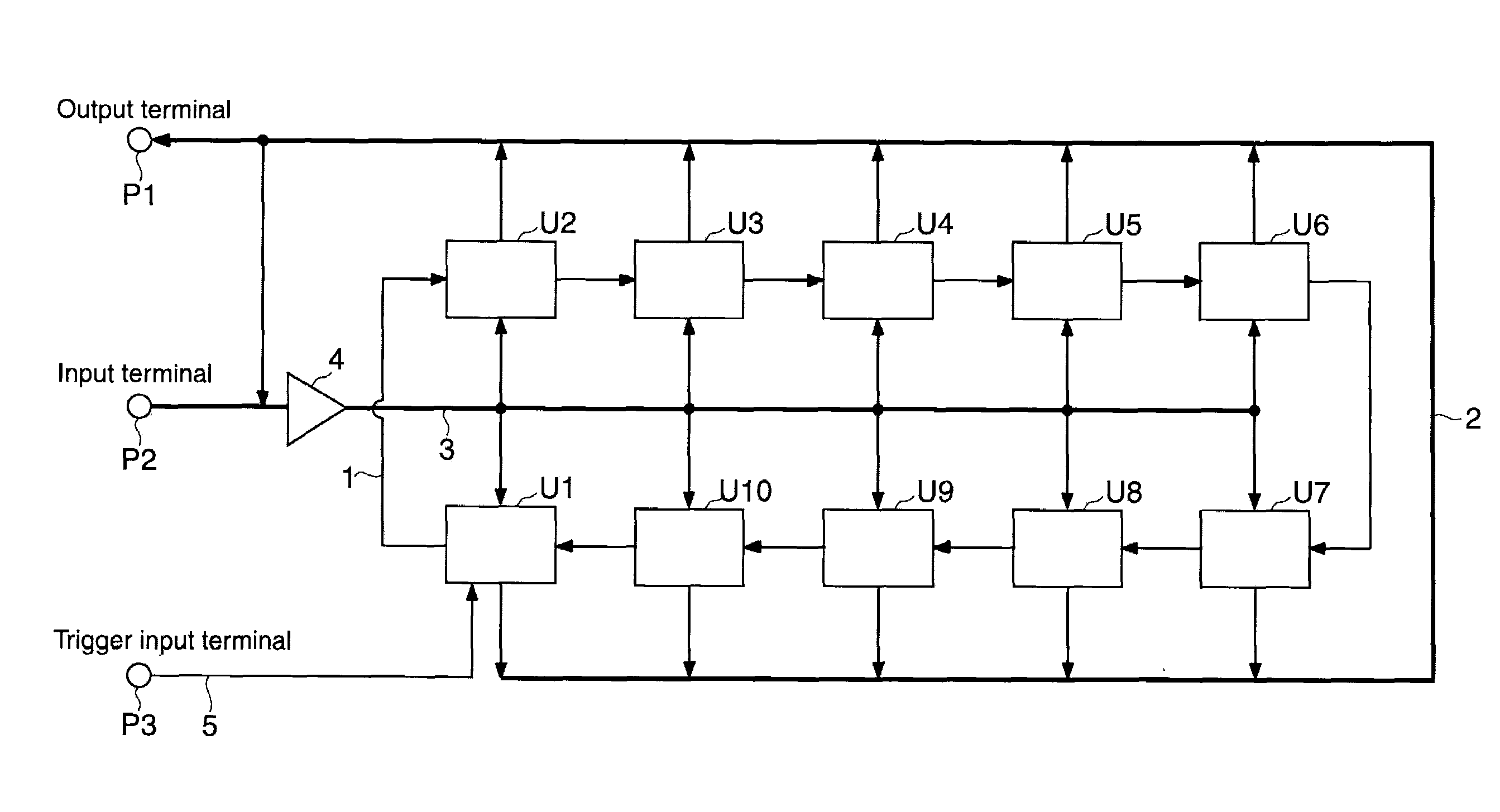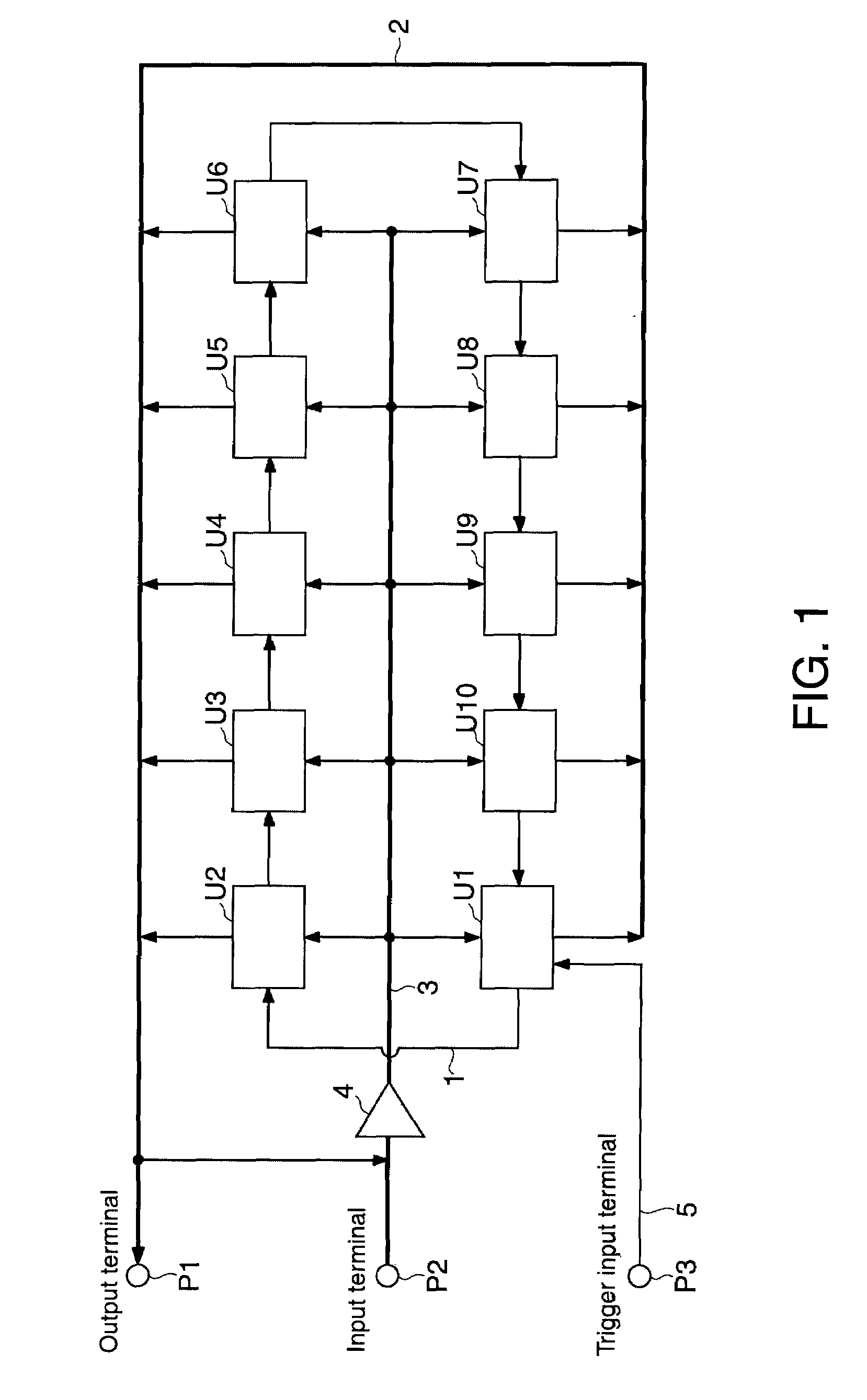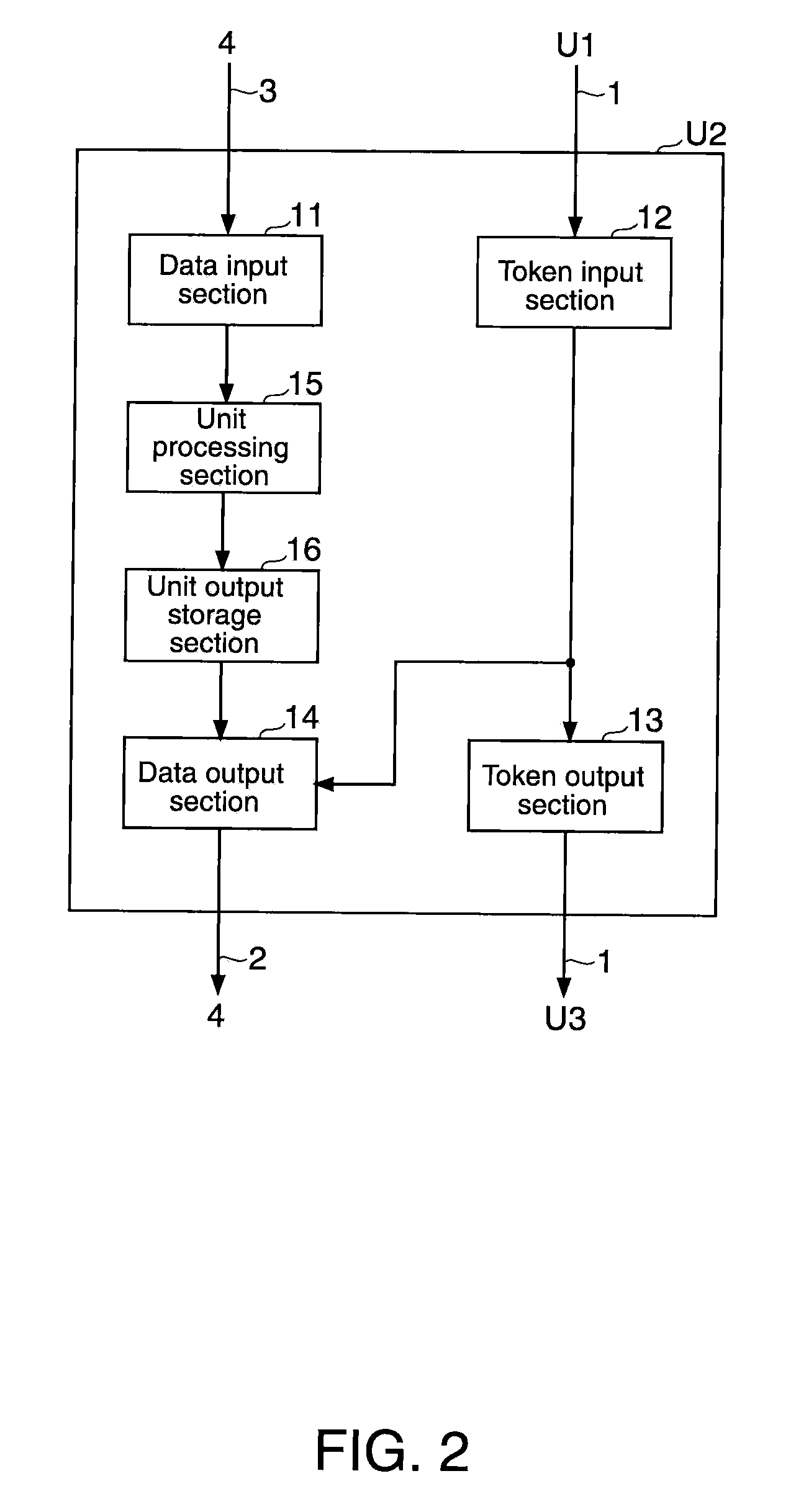Parallel processing device and parallel processing method
a processing device and parallel processing technology, applied in computing models, instruments, biological models, etc., can solve the problems of moor's law, difficult processing in a practical time span, and a large amount of computation, and achieve the effect of facilitating wiring
- Summary
- Abstract
- Description
- Claims
- Application Information
AI Technical Summary
Benefits of technology
Problems solved by technology
Method used
Image
Examples
first embodiment
[0119]Structure of Unit When Applied to Hierarchical Neural Network
[0120]Next, a structure in which the parallel processing device is applied to a hierarchical neural network is described. The entire structure of the parallel processing device in the hierarchical neural network has generally the same structure as that of the parallel processing device in FIG. 1, only except that its components are different. Accordingly, referring to FIG. 3, the structure of the unit in which the parallel processing device is applied to a hierarchical neural network is described.
[0121]The unit has a data input section 101, a token input section 102, a token output section 103, and a data output section 104. Also, the unit has a weight storage section 130, a layer information storage section 133, a unit number storage section 134, a product-sum calculation first value storage section 131, a function storage section 132, a unit output storage section 135, a data output flag storage section 136, and a ...
second embodiment
[0177]Structure of Units when Applied to Self-Organizing Map
[0178]Next, an example in which the parallel processing device in accordance with the present embodiment is applied to a self-organizing map is described. A self-organizing map learns statistical characteristics of data composed of multivariable, arranges similar data to be close to one another, and enables visualization of data, by executing processings to be described below.
[0179]Each of the units has a coupling weight vector of the unit. First, when an input data vector is inputted in each of the units, and each of the units calculates a norm that is a difference between the input data vector inputted and the coupling weight vector (procedure A200). Next, one of the units with the smallest norm is selected as a winner unit (procedure A201). Then, the value of the coupling weight vector is modified by a predetermined function in a manner that the selected winner unit and its neighboring units become much closer to the inp...
third embodiment
[0277]Structure of Unit when Applied to Hierarchical Neural Network
[0278]Next, the structure of a parallel processing device in accordance with the second base structure when applied to a hierarchical neural network is described. In the hierarchical neural network, the overall structure of the parallel processing device is generally the same as the structure of the parallel processing device shown in FIG. 14, and only the structure of each of the units is different. Therefore, referring to FIG. 17, only the structure of the unit when applied to a hierarchical neural network is described.
[0279]The unit includes a data input section 101A, a data output section 104A, a weight storage section 130, a product-sum calculation first value storage section 131, a layer information storage section 133, a function storage section 132, a unit output storage section 135A, a preceding stage unit output storage section 138B, a preceding stage unit number storage section 139B, a selection unit numbe...
PUM
 Login to View More
Login to View More Abstract
Description
Claims
Application Information
 Login to View More
Login to View More - R&D
- Intellectual Property
- Life Sciences
- Materials
- Tech Scout
- Unparalleled Data Quality
- Higher Quality Content
- 60% Fewer Hallucinations
Browse by: Latest US Patents, China's latest patents, Technical Efficacy Thesaurus, Application Domain, Technology Topic, Popular Technical Reports.
© 2025 PatSnap. All rights reserved.Legal|Privacy policy|Modern Slavery Act Transparency Statement|Sitemap|About US| Contact US: help@patsnap.com



